Homemade Orange Glazed Donuts: the Easy Recipe for Soft, Delicious Baked or Fried Donuts

Orange Glazed Donuts are very simple leavened sweets to make at home, perfect to bring to the table as a snack for adults and children or for a party buffet.
In our recipe we have prepared them both fried and in the oven, so as to satisfy gluttons and those who pay attention to their figure in one go, with a dough made with flour, granulated sugar, crumbled brewer's yeast, milk, orange juice and jest, extract of vanilla, eggs, butter and salt. After a rest period at room temperature, roll out the dough, which has doubled in volume, on a floured work surface into a rectangle approximately 1cm thick. Using a 2.3 inch pastry cutter, cut out many disks. Then pierce the center with the smooth nozzle of a pastry bag and then leave the resulting donut to rise, covered with a clean cotton cloth, for another 40 minutes.
At this point you can decide whether to fry them in boiling seed oil at 329°F (165°C) or to cook them in a static oven at 338°F (170°C), on a baking tray lined with baking paper or inside a special mould, until they are golden and fragrant. Once ready, all you have to do is cover the donuts with a glaze with citrus notes made by mixing the icing sugar with the orange juice with an electric whisk and finally garnish them on the surface a cascade of multicolored sprinkles: for a colorful and fun idea, perfect to also serve as a dessert at the end of a meal or at a birthday party.
What Are Orange Glazed Donuts?
Glazed donuts, a beloved treat with origins tracing back to the early 19th century, became a staple in American cuisine through Dutch settlers who introduced "olykoeks" (oil cakes) to the New World. Over time, these early fried pastries evolved into the iconic ring-shaped donuts we know today, often finished with a sweet glaze. Orange glazed donuts are a delightful variation, infusing the traditional donut with a burst of citrus flavor. The orange zest and juice in the dough and glaze provide a refreshing twist, creating a perfect balance of sweetness and tanginess, making them a unique and flavorful treat for any occasion.
Tips for the Best Orange Glazed Donuts?
- Ensure that the flours are thoroughly sifted to prevent lumps and to incorporate air, resulting in a lighter dough.
- Add the milk slowly while mixing at medium speed to allow the dough to absorb it evenly without becoming too sticky.
- Use freshly squeezed orange juice at room temperature. Cold juice can slow down the yeast activity, while warm juice can accelerate it too much, leading to uneven rising.
- Add the eggs one at a time, ensuring each egg is fully incorporated before adding the next. This prevents the dough from becoming too liquid at once. Add the soft butter in small pieces, allowing each piece to be fully incorporated before adding more. This gradual addition helps achieve a smooth, elastic dough.
- Place the dough in a slightly warm, draft-free environment to rise. If using the oven, ensure the light is turned off to avoid overheating.
- For baking, make sure the mold is well-buttered and floured to prevent sticking. For frying, maintain the oil temperature at 329°F to achieve a golden, crisp exterior without burning.
- Prepare the glaze while the donuts are cooling. The icing sugar should be sifted to avoid lumps, and the orange juice added gradually for a smooth consistency. Dip the donuts while they are still slightly warm for better adherence of the glaze.
- If you like, you can sprinkle the donuts cooked in the oven with vanilla icing sugar and then dip the fried ones, while still hot, in granulated sugar. Or you can finish them, as an alternative to the multicolored sprinkles, with crunchy grains, flakes of dried fruit or grated coconut.
- If you prefer you can add a few drops of food coloring of the desired shade to the icing, or you can opt for a dark or milk coating.
Old-Fashioned Vs. Glazed Donuts
Old-fashioned donuts are typically cake-based, made with a denser batter that results in a crumbly, tender interior and a slightly crispy exterior. They often feature a cracked, irregular surface due to their unique frying method. In contrast, glazed donuts are usually yeast-raised, giving them a lighter, airier texture. After frying, they are dipped in a sugary glaze that hardens to a smooth, glossy finish. While old-fashioned donuts offer a rich, nostalgic bite, glazed donuts provide a sweet, melt-in-your-mouth experience.
What If I Don't Have a Donut Pan to Bake The Donuts?
If you don't have a donut pan, you can still bake donuts by shaping them manually. Roll out the dough to about 1 cm thickness on a floured surface, then use a round cutter to cut out circles, and a smaller cutter to create the holes in the center. Place these dough rings on a baking sheet lined with parchment paper. To help them maintain their shape while baking, you can insert small balls of foil into the center holes.
Do I Need to Chill The Dough Before Shaping the Donuts?
Chilling the dough before shaping and frying or baking donuts isn't strictly necessary, but it can be beneficial. Chilling firms up the dough, making it easier to handle and shape, which can lead to more uniform donuts. It also helps to relax the gluten, resulting in a more tender texture. Additionally, cold dough can help donuts retain their shape better during frying, reducing the risk of them becoming misshapen.
Why Are My Donuts Dry?
Donuts can turn out dry due to overmixing the dough, which develops too much gluten and results in a tough texture. Additionally, overcooking them, whether baking or frying, removes too much moisture, making them dry. Insufficient fat or liquid in the dough recipe can also lead to dryness.
Why Are My Donuts Soggy?
Donuts can turn out soggy if the frying oil temperature is too low, causing them to absorb excess oil. Additionally, if donuts are not drained properly on paper towels or a wire rack after frying, the residual oil can make them soggy. For baked donuts, underbaking can leave them too moist and doughy inside.
How Do I Know When the Donuts are Cooked?
To know when donuts are cooked, look for a golden-brown color on the outside. For fried donuts, this typically takes about 2-3 minutes per side. They should also float to the top of the oil when fully cooked. For baked donuts, a toothpick inserted into the center should come out clean, and they should spring back when lightly pressed. Additionally, the donuts should have an even rise and be slightly firm to the touch, indicating they are cooked through.
More Donuts Recipes You Can't Miss
Old-Fashioned Sour Cream Donuts
How to Store Orange Glazed Donuts
Once ready, you can store the donuts at room temperature, under a glass bell jar, for a maximum of 2 days. If you want to take advantage of the timing, you can prepare the icing a little in advance: it will keep in the fridge, covered with transparent film in contact, for a maximum of 3-4 days.
Ingredients
How to Make Orange Glazed Donuts
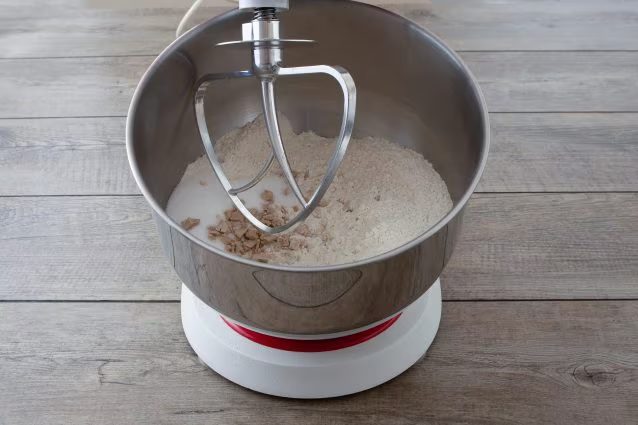;Resize,width=712;)
Sift the flours into the bowl of a planetary mixer, add the granulated sugar and the crumbled brewer's yeast and start working with the mechanical leaf at minimum speed.
Sift the flours into the bowl of a planetary mixer, add the granulated sugar and the crumbled brewer's yeast and start working with the mechanical leaf at minimum speed.
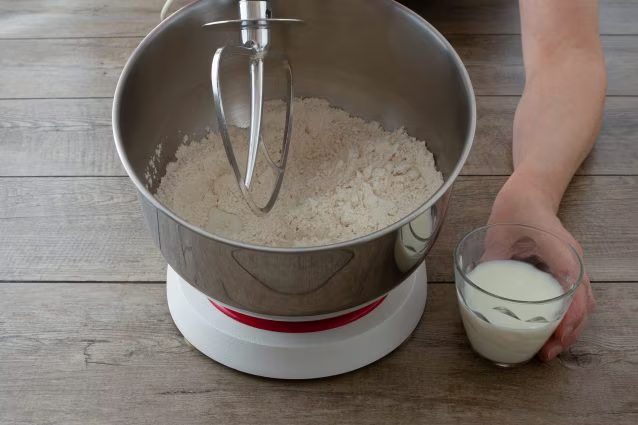;Resize,width=712;)
Then, add the milk slowly and continue kneading at medium speed.
Then, add the milk slowly and continue kneading at medium speed.
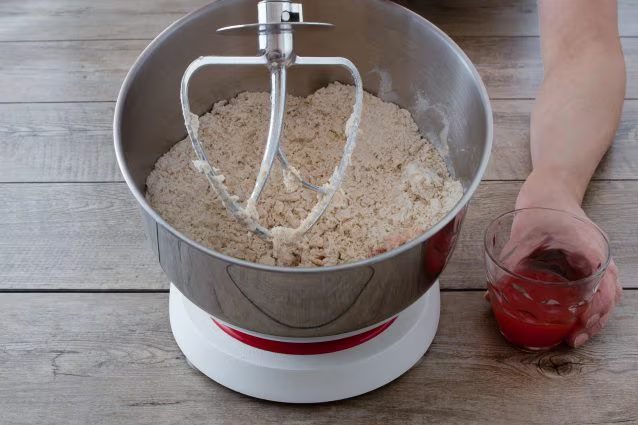;Resize,width=712;)
Pour in the orange juice.
Pour in the orange juice.
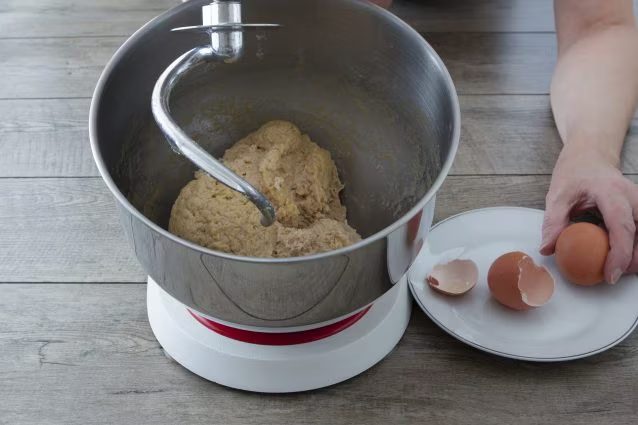;Resize,width=712;)
Insert the hook instead of the leaf whisk and incorporate the eggs, one by one.
Insert the hook instead of the leaf whisk and incorporate the eggs, one by one.
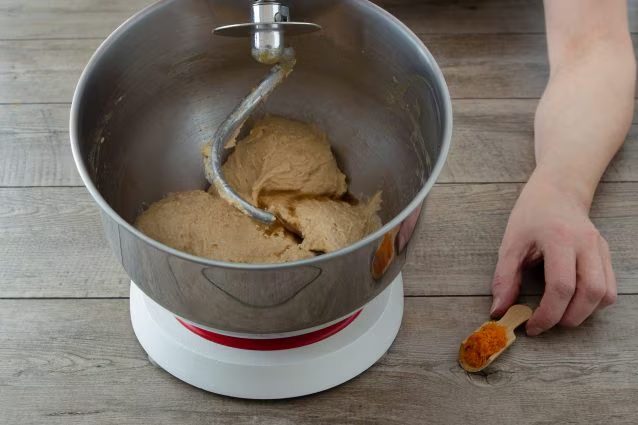;Resize,width=712;)
Perfume with the vanilla extract and the grated orange zest and add the salt.
Perfume with the vanilla extract and the grated orange zest and add the salt.
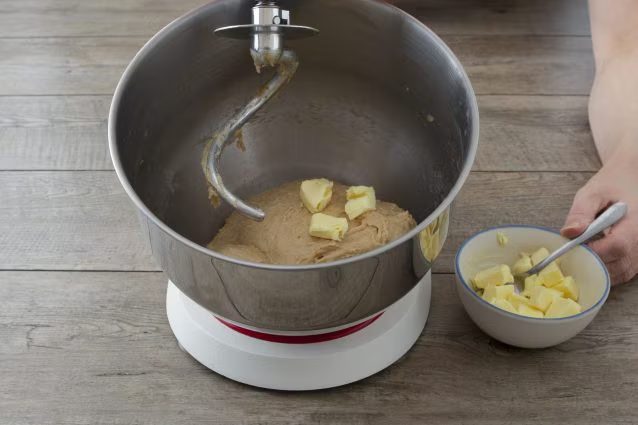;Resize,width=712;)
Add the soft butter in pieces, little at a time, and continue working until you obtain a well-blended mixture.
Add the soft butter in pieces, little at a time, and continue working until you obtain a well-blended mixture.
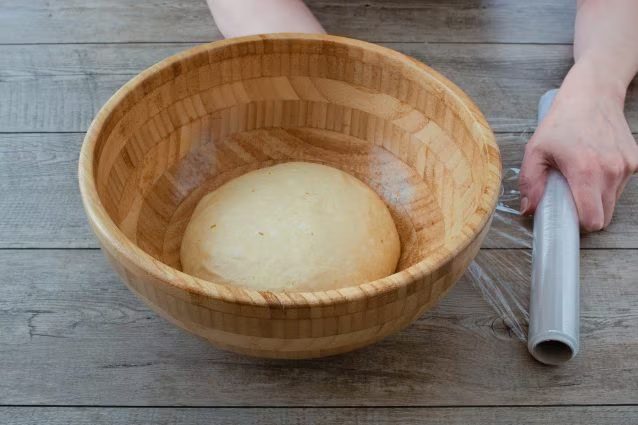;Resize,width=712;)
Transfer the dough to a floured work surface, make a couple of reinforcement folds and form a ball; then place it in a bowl lightly greased with a drizzle of extra virgin olive oil, cover with a sheet of transparent film and let it rise in the oven with the light turned off for about a couple of hours.
Transfer the dough to a floured work surface, make a couple of reinforcement folds and form a ball; then place it in a bowl lightly greased with a drizzle of extra virgin olive oil, cover with a sheet of transparent film and let it rise in the oven with the light turned off for about a couple of hours.
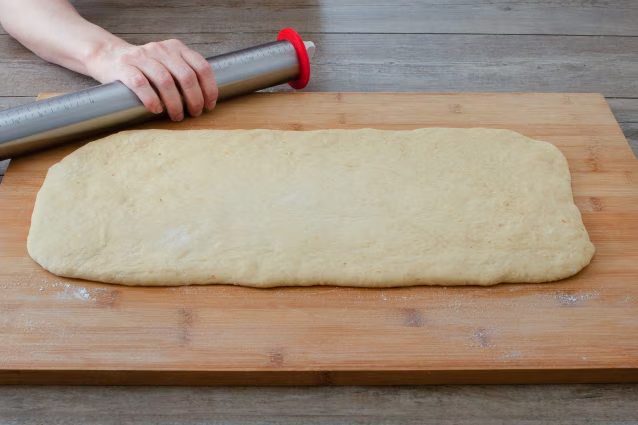;Resize,width=712;)
Once doubled in volume, deflate the dough with your hands and roll it out with a rolling pin, on a pastry board sprinkled with a little flour, until it forms a rectangle about 1cm high.
Once doubled in volume, deflate the dough with your hands and roll it out with a rolling pin, on a pastry board sprinkled with a little flour, until it forms a rectangle about 1cm high.
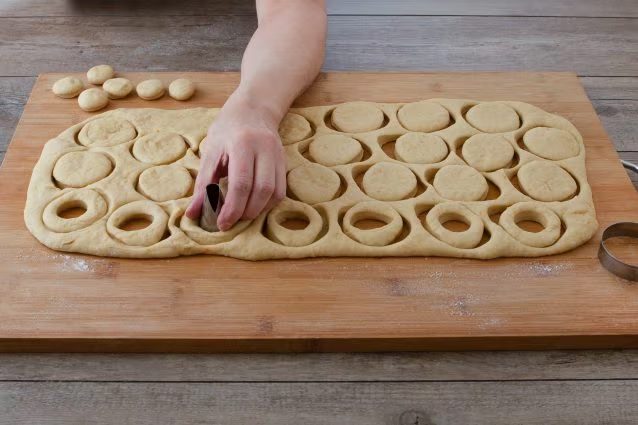;Resize,width=712;)
Using a 6cm diameter pastry cutter, cut out many disks, then pierce them in the center with the nozzle of a piping bag and shape the donuts.
Using a 6cm diameter pastry cutter, cut out many disks, then pierce them in the center with the nozzle of a piping bag and shape the donuts.
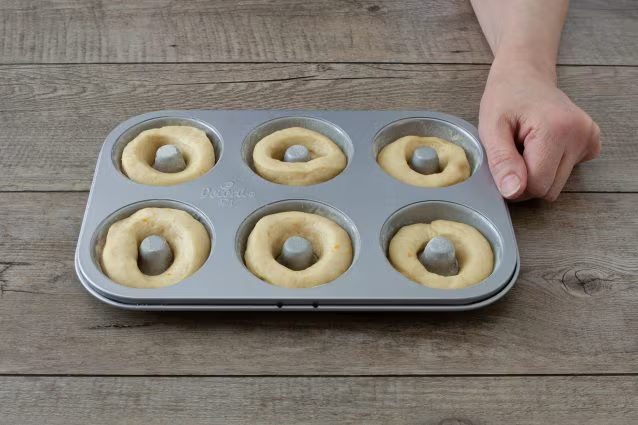;Resize,width=712;)
For baking in the oven: insert the donuts into a well-buttered and floured mold and let them rise, covered with a clean cotton cloth, for about 40 minutes. Once finished, cook them in a static oven at 339°F (170°C) for 15 minutes or until golden-brown.
For baking in the oven: insert the donuts into a well-buttered and floured mold and let them rise, covered with a clean cotton cloth, for about 40 minutes. Once finished, cook them in a static oven at 339°F (170°C) for 15 minutes or until golden-brown.
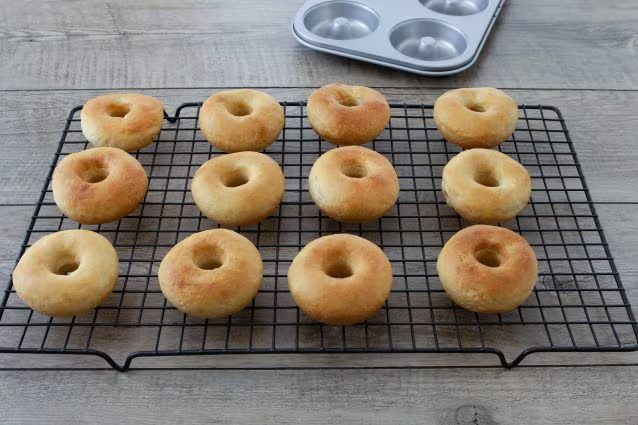;Resize,width=712;)
Once cooked, turn the donuts out onto a cake rack and let them cool completely before frosting them.
Once cooked, turn the donuts out onto a cake rack and let them cool completely before frosting them.
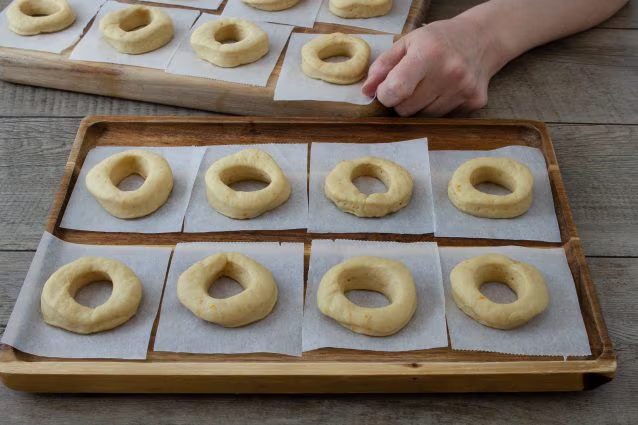;Resize,width=712;)
For frying: once the donuts have been formed, place them on small squares of baking paper placed on a tray and let them rise, always covered with a cloth for 40 minutes.
For frying: once the donuts have been formed, place them on small squares of baking paper placed on a tray and let them rise, always covered with a cloth for 40 minutes.
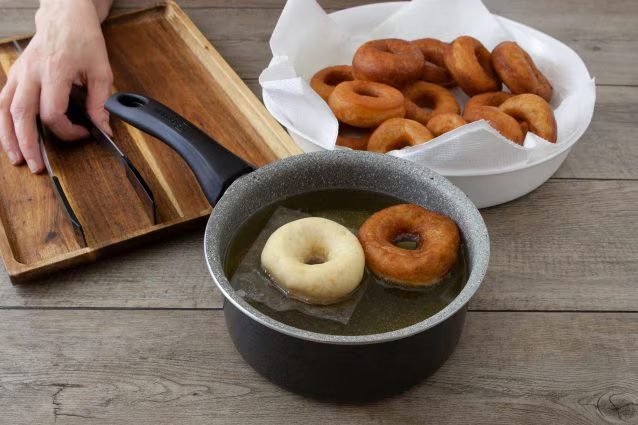;Resize,width=712;)
Once the leavening time has passed, dip the donuts with all the paper in a saucepan with plenty of boiling seed oil brought to a temperature of 329°F (165°C), then remove the square of baking paper after a few moments and fry them until they are golden and fragrant. Once finished, remove the sweets with a slotted spoon and let them drain on a sheet of absorbent kitchen paper.
Once the leavening time has passed, dip the donuts with all the paper in a saucepan with plenty of boiling seed oil brought to a temperature of 329°F (165°C), then remove the square of baking paper after a few moments and fry them until they are golden and fragrant. Once finished, remove the sweets with a slotted spoon and let them drain on a sheet of absorbent kitchen paper.
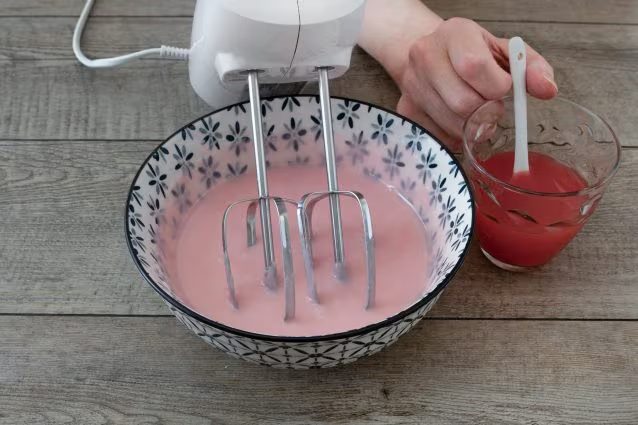;Resize,width=712;)
In the meantime, prepare the icing: collect the sifted icing sugar in a bowl, add the orange juice, little at a time, and whip with an electric whisk until the mixture is smooth and free of lumps.
In the meantime, prepare the icing: collect the sifted icing sugar in a bowl, add the orange juice, little at a time, and whip with an electric whisk until the mixture is smooth and free of lumps.
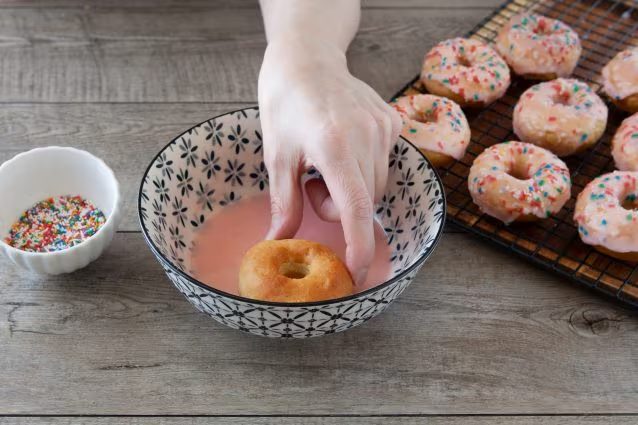;Resize,width=712;)
Dip the fried and baked donuts into the glaze, cover them immediately with the colored sugar sprinkles and leave them to dry on a wire rack.
Dip the fried and baked donuts into the glaze, cover them immediately with the colored sugar sprinkles and leave them to dry on a wire rack.
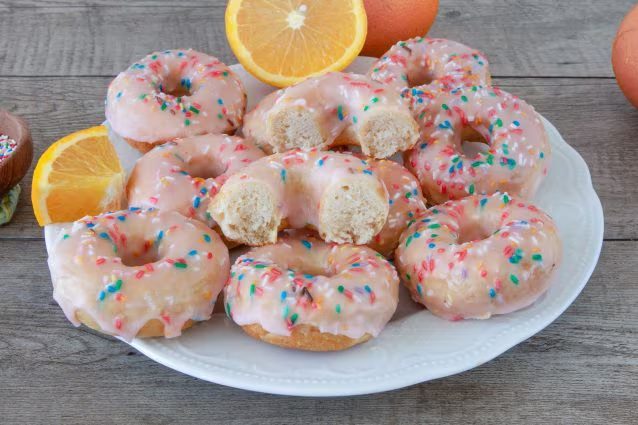;Resize,width=712;)
Arrange the orange glazed donuts on a serving plate, bring to the table and serve. Enjoy!
Arrange the orange glazed donuts on a serving plate, bring to the table and serve. Enjoy!
;Resize,width=767;)


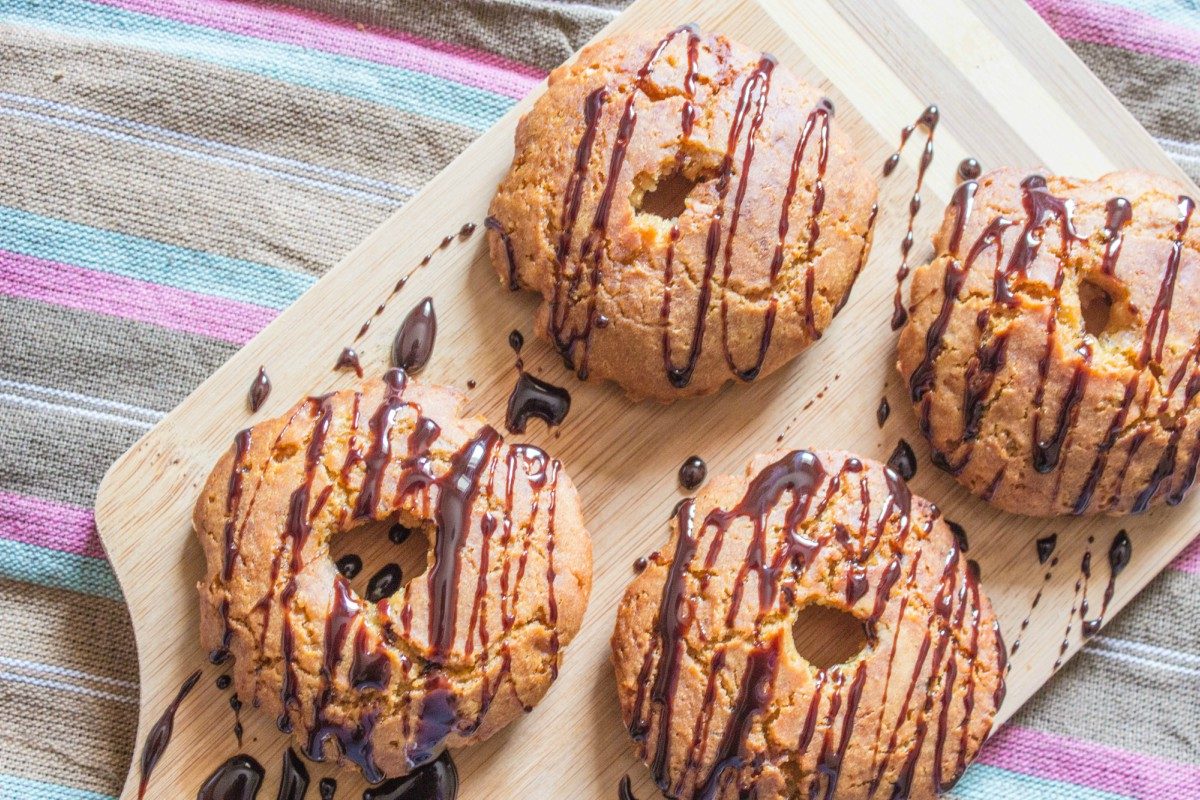;Resize,width=712;)
